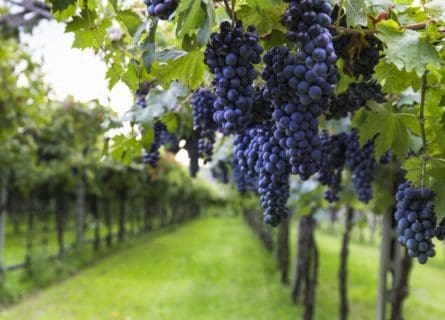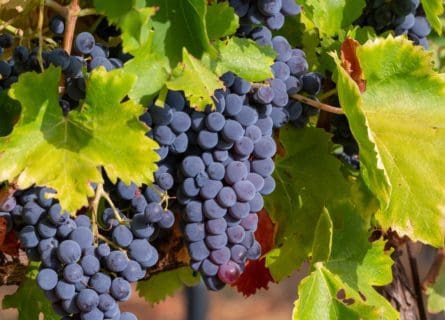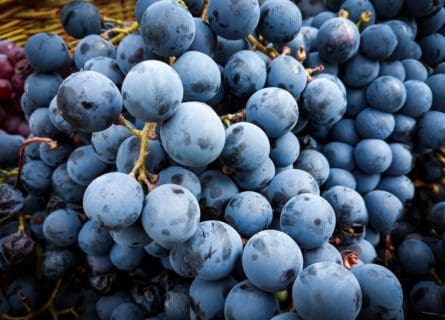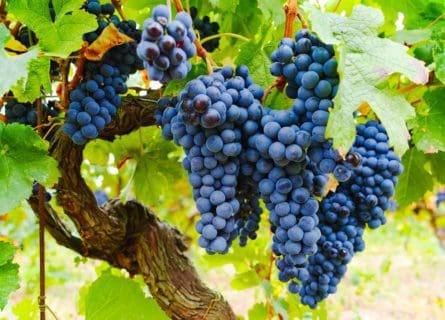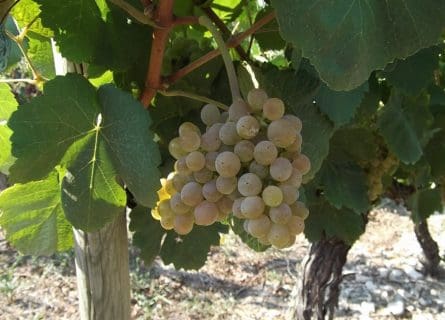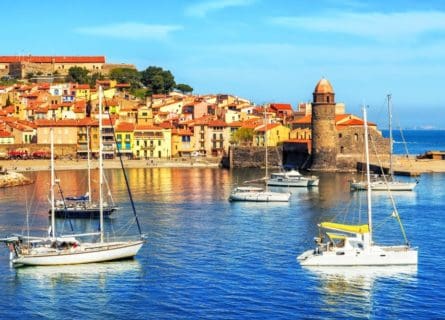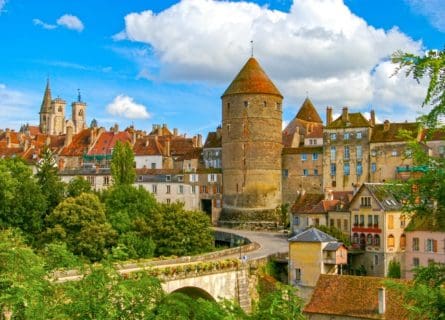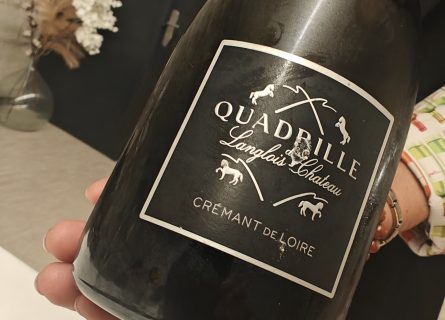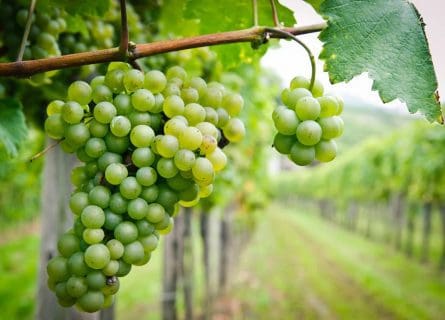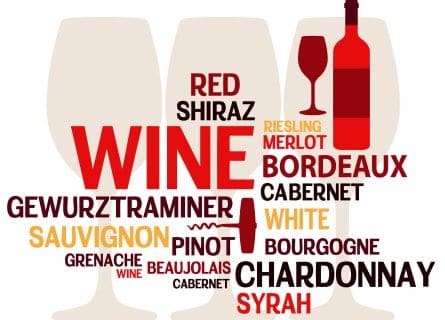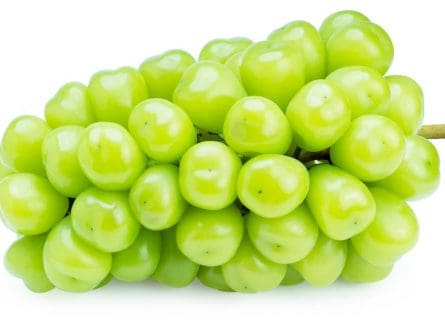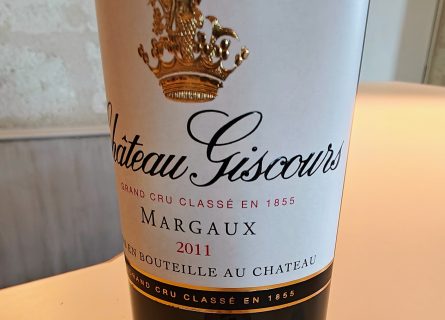Côtes du Rhône Wine Region Guide
A Legacy of Diversity and Excellence - Where Quality Meets Value in Every Glass
EXPLORE ALL OUR RHôNE VALLEY WINE REGION GUIDES
Last updated: April 4, 2025
Introduction
Côtes du Rhône is without question one of France’s most important—and diverse—appellations. Encompassing over 30,000 hectares of vineyards in the northern and southern Rhône, it is the region’s leading exporter of premium labels that don’t cost the earth; red, white, and rosé wines all fly under the AOC banner.
In the 20th century, however, wide quality variations and some heavy over-production damaged the area’s reputation in the eyes of consumers. But, thanks to hefty amounts of capital and raw talent, this bourgeoning appellation now offers a treasure trove of delicious wines and original flavors. Reliability has become its middle name.
Discover More About French Wine
History
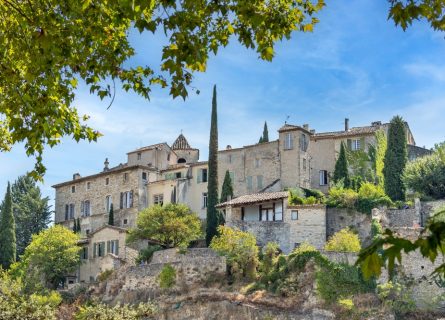
Over two millennia ago, enterprising Greeks from Asia Minor colonized the second-largest appellation in France, with Bordeaux AOC being number one. They planted vines in Provence and the southern Rhône while establishing trading links with the Celtic Gauls.
However, Julius Caesar conquered Gaul after his armies defeated the Celtic Arverni tribes near present-day Clermont-Ferrand. Roman rule in the Rhône Valley reigned supreme, as did their love of the noble grape. Indeed, winemaking in the ancient world reached its zenith at the height of the Western Roman Empire, and France was at the center of this lucrative industry.
The city of Vienne (established in 125 BC) was one such important source of wine, surrounded by steep terraces erected to protect the young vines. Pliny the Elder and Virgil praised these sweet and potent concoctions, often adulterated with herbs, although modern consumers would probably find them undrinkable!
Church’s Influence on Viticulture
After the Roman Empire fell apart in the 5th century, the Frankish Merovingian and Carolingian dynasties ruled France from the 5th to 10th centuries. By the Middle Ages, the Catholic Church had assumed a great interest in viticulture, delegating responsibility to the monastic orders that increasingly dominated the landscape of the southern Rhône.
Meanwhile, a great schism in Rome forced Pope Clement V and his court to relocate to Avignon in the 1300s. However, even after the church moved back to Italy in the 14th century, merchants continued shipping the best wines of the Rhône to the Papal court.
Establishment of Appellation and Its Historical Significance
The rising commercial success of the Rhône Valley soon attracted attention from the monarchy, leading to the introduction of the first regulations designed to safeguard local quality and authenticity in the mid-17th century.
Subsequently, in 1737, a royal decree issued the designation “Côtes du Rhône.” This powerful emblem, enshrined in law in 1937, has remained one of France’s most globally recognized pan-regional appellations.
Geography and terroir
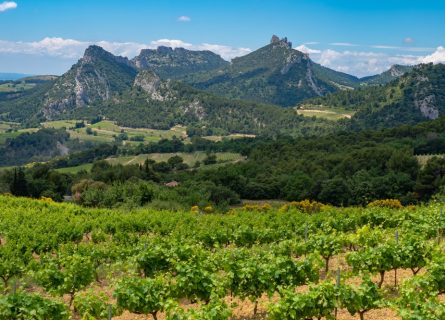
It is not easy to understand Côtes du Rhône: it is one of the few appellations in France that does not restrict itself to a specific geographical area. Indeed, this generic designation covers over 45 communes north of Montélimar and 124 in the southern Rhône, producing a broad palate of red, white, and rosé wines.
Therefore, one can expect to encounter a wide variation of quality and style, not least due to the differences in climate and soil between the northern and southern Rhône.
Characteristics and Varieties of the Northern and Southern Rhône
So allow us to give you some pointers. The northern Rhône is renowned for its steep granite terraces and continental climate: most reds tend to contain a very high percentage of Syrah, although the regulations permit other varieties, such as Picpoul Noir.
However, most of Côtes du Rhône is made in the south. In the expansive terraces due north, east, and west of Avignon, a rich mix of varieties are cultivated alongside garrigue and smooth, round stones known as galets. The region’s heart is undoubtedly Châteauneuf-du-Pape, renowned for producing some of France’s most powerful and spicy wines.
But, it is surrounded by numerous villages with unique stories, some of which have been given their own appellations. The grape variety is the common thread that binds them together: Grenache must account for at least 40% of the final cuvée in the southern Rhône, supported by Syrah and Mourvedre.
In practice, Grenache Noir usually (if not always) dominates the blend, yielding fairly potent and alcoholic wines that will show variances depending on the terroir and winemaking. Terroir is very much at the heart of the regulations, despite the vast territory they cover; there is a clear path for promotion for villages in the Rhône once their wines have been certified by an expert panel as superior quality.
System for Promoting Superior Wine Regions
The mechanism for promotion is called Côtes du Rhône-Villages. Introduced in 1966, its purpose was to elevate communes and subregions that consistently outperform their peers, allowing them access to a superior designation. Ninety-five villages belong to the appellation, producing a generous volume of well-made and affordable wine.
In addition, 21 communes have the right to append their names to the Côtes du Rhône-Villages appellation, including Gadagne, Laudun, Massif d’Uchaux, Plan de Dieu, Puyméras, Roaix, Rochegude, and Valréas. These favored villages must comply with strict rules pertaining to yield and production standards, much like Châteauneuf-du-Pape and Gigondas.
In 1971, the latter became a standalone appellation after being part of the Côtes du Rhône-Villages. Vacqueyras, Vinsobres, and Cairanne were also promoted in 1990, 2006, and 2016, respectively.
Nevertheless, each of these 21 subregions has a unique story to tell, even if they’re still part of the overarching Villages banner. Chusclan and nearby Laudun are renowned for their very elegant and perfumed reds, a result of the sandy gravel soils interspersed with limestone scree.
Meanwhile, the limestone-clay terroirs of Roaix yield a far more concentrated style of Grenache, in addition to some very fruity roses and fine whites. A thorough exploration of every nook and cranny of the Rhône would take a long time.
Winemaking and regional classifications

The wine culture of the Côtes du Rhône is paradoxical: 23 different grape varieties are permitted by the authorities, yet the vast majority of red Côtes du Rhône is heady with the scent of Grenache.
Likewise, the best examples from the northern Rhône are always led by Syrah, as Grenache is not a feature of the vineyards north of Montélimar. Yet there is a longstanding tradition of blending here, although that is far more true of the southern Rhône than anywhere else.
Blending and Vinification Techniques in the Northern Rhône
In the northern Rhône, however, growers sometimes use a small percentage of white varieties to ‘lift’ their wines, adding texture and aromatics to their Syrah-dominant creations. The best wines offer black cherry and white pepper notes, supported by supple tannins and fresh acidity.
That said, vinification and berry handling approaches can vary significantly in this broadest of appellations. The only discernible pattern that emerges involves the judicious use of new oak: relatively few blends are aged in 100% new barrique, while a mixture of whole and crushed berries are often used in the fermentation. Most growers prioritize vibrant aromatics and freshness over raw power and excessive extraction. Of course, there are exceptions to every rule.
The ‘Holy Trinity’ and Peripheral Varieties in Southern Rhône Winemaking
In the south, meanwhile, Grenache, Syrah, and Mourvedre constitute the whole trinity of red Côtes du Rhône winemaking. How they are handled will depend on the terroir and proclivities of the winemaker, but the critical mass are fruit-rich and ripe wines with pretty generous levels of alcohol.
Mourvedre adds additional fruit and aromatics to the blend, while Syrah adds structure and finesse. The regulations also permit the incorporation of nine periphery grape varieties: Carignan, Cinsault, Counoise, Muscardin, Vaccarese, Picpoul Noir, Terret Noir, Grenache Gris, and Clairette.
Yet few producers use the above in any great quantities, albeit ripe Carignan can add a pleasant tang to GSM (Grenache/Syrah/Mourvedre) blends. Moreover, while the smell of Grenache is omnipresent in most wines, the growing use of concrete eggs and amphorae maintains a welcome undercurrent of stylistic variation.
Rising Importance and Evolution of Côtes du Rhône Blanc and Rosé Wines
In the 1990s, white and rosé wines accounted for just 2% and 4% of production; there was little consumer awareness of indigenous white grapes and styles. However, Côtes du Rhône Blanc has become more important – and lucrative – in recent years as fashion has swung towards lighter and cooler beverages.
The authorities permit a wide spectrum of grape varieties to be used in these delicious blends, including Marsanne, Roussanne, Viognier, Grenache Blanc, Bourboulenc, and Picpoul. Chateau de Fonsalette in the Vaucluse makes an outstanding flagship wine using a mixture of Grenache Blanc, Clairette, and Marsanne. These sumptuous whites, approachable from a young age, develop an extraordinarily complex bouquet after a few years: orange peel, lavender, honeysuckle, and thyme.
Meanwhile, protective handling, cool vinifications, and sensitive oak aging are transforming the reputation of white Côtes du Rhône across the board. Nowadays, customers can confidently purchase most leading brands, a stark contrast to the situation 35 years ago.
Facts & Figures
Key wine styles
- A broad spectrum of red, white, and rosé wines.
Appellation structure
- AOC Côtes du Rhône and Côtes du Rhône-Villages
Hectares under vine
- 31,926
Average annual production
- 3.3 million hectolitres per annum (Côtes du Rhône)
Approximate number of producers
- 5,292
The lowdown
Côtes du Rhône re-emerged in the 21st century as an international player in the wine world. The story is familiar: lazy winemaking and rustic equipment was a recipe for substandard dross – Côtes du Rhône was something you tolerated rather than celebrated.
Yet a combination of viticultural renewal – sustainable winegrowing is the height of fashion in 2024 – and significant investment has elevated Côtes du Rhône to the top ranks. With an incredible diversity of mesoclimates, terroirs, and indigenous grape varieties, it is one of Europe’s most exciting wine zones. The top cuvées continue to garner high scores from critics, new and experimental styles are emerging (orange wine is one example), and there is an increasing focus on organic/biodynamic viticulture.
Support for New and Diverse Winegrowers
In addition, the region has introduced a system of grants and mentor schemes to encourage younger people to get into winegrowing; the association “Femmes Vignes Rhône” continues its vital work in promoting female winemakers and the unique insights they bring. Thus, describing Côtes du Rhône as a progressive tour de force would not be hyperbolic.
Of course, this does not matter if the wines are second-rate. Fortunately, the critical mass is now generally excellent: reds of richness and balance in both north and south. The best have a lovely brightness of flavor, supple tannins, and bags of complexity. Even more progress has occurred in producing saline dry whites over the past two decades.
Growers are wisely exploiting an enviable palate of high-quality grapes, not least Marsanne, Roussanne, and Viognier; local expressions are moving away from the somewhat oxidative and heavy style into something more aromatic and fruit-driven, and their success in export markets has been a revelation.
Therefore, the authorities have been encouraging vignerons to plant more white varieties, which they heavily promoted during a publicity tour of the US in 2023.
Exceptional Value for Money
Best of all, though, is the astonishing value that Côtes du Rhône brings to the table. Many regions tout their affordability credentials in 2024, with varying levels of success – and indeed disingenuousness. However, few destinations in France today can rival the Rhône Valley in terms of value for money. A few super-expensive labels aside, Côtes du Rhône is not a byword for oligarchy and Burgundy-esque pricing. The region’s growers have democratized wine by allowing everyone to sample greatness at under $25 a head.
Key Grape Varietals
-
Bourboulenc
Bourboulenc is a white wine grape variety grown mainly in Southern Rhône, Provence, and Languedoc in southern France.
Find out more -
Clairette Blanc
Savor Clairette blanche, a captivating white wine grape from France's Chateauneuf-du-Pape, Provence, Rhône, and Languedoc vineyards
Find out more -
Grenache Blanc
Grenache blanc is a white wine grape varietal popular in the Rhône, Châteauneuf-du-Pape and Languedoc-Roussillon regions of Southern France.
Find out more -
Marsanne
Uncover the allure of Marsanne grape variety. From its traditional role in Rhône blends to the new wave of single-varietal Marsanne wines.
Find out more -
Roussanne
Learn about Roussanne, the elegant white grape native to Rhône. Often blended with Marsanne, explore its unique qualities and rich heritage in our guide.
Find out more -
Viognier
Viognier comes from the northern Rhône valley AOC of Condrieu and is where its most famous white wines are produced.
Find out more -
Carignan
Carignan is a red grape variety that grows mostly in Southern France, and is often used as a blending grape
Find out more -
Cinsault
Cinsault is a red wine grape that is important in the Languedoc-Roussillon wine region of France because of its tolerance to high temperatures.
Find out more -
Grenache
Discover grenache, a mediterranean grape that is dark-skinned red wine grape variety and an unlikely hero of a grape
Find out more -
Mourvedre
Mourvèdre is a red wine grape variety of mysterious origin that's grown around the world, including the Rhone and Provence regions of France.
Find out more -
Syrah
Syrah is dark-skinned and perhaps the most underrated of the 'noble' red grape varieties.
Find out more
Côtes du Rhône gastronomy
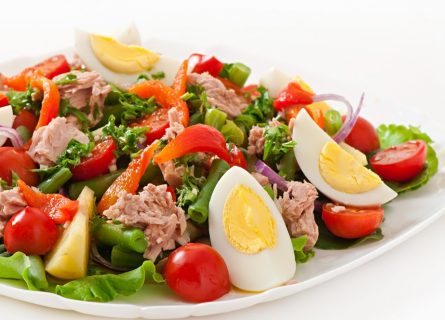
The myriad of wine styles produced in the Rhône Valley can handle almost any gastronomic eventuality, be it Camargue lamb, freshwater perch, bouillabaisse, or salade nicoise. Major centers of fine dining include Avignon, Valence, and Vienne, although there are plenty of more casual options, too; many visitors enjoy the boisterous hospitality and informality of a classic bistro, complete with chalkboard daily special and rosé on tap.
Yet restaurants in the Rhône can be a mix of tourist traps and genuine good finds. Our best advice is to follow the locals or your nose.
A Gastronomic Guide to the Cuisine of the Rhone Valley: Read more
Wineries Recommended by Cellar Tours
-
Chateau Rayas
Read more -
Château de Vaudieu
Experience extraordinary Châteauneuf-du-Pape wines at Château de Vaudieu. Discover remarkable terroir, skillful winemaking, and the exquisite Admiral G cuvée. Read more -
Château La Nerthe
Taste the exceptional Châteauneuf-du-Pape wines of Château La Nerthe: a historic property blending tradition and modernity for exquisite reds and whites. Read more -
Château Pesquié
Experience the captivating Château Pesquié in France's unspoiled Ventoux region. Discover aromatic Grenache wines and exquisite craftsmanship. Plan your trip! Read more -
Domaine de la Citadelle
Discover Domaine de la Citadelle, a top wine producer in Luberon. Experience remarkable wines, organic viticulture, and warm hospitality in the Southern Rhône. Read more -
Domaine Montirius
Discover Montirius, the innovative winery in Vacqueyras, embracing biodynamics since 1999. Exceptional wines, purity, balance, and depth. Plan your trip! Read more -
Guigal
Legendary Rhône wine producer famous for their exceptional Côte-Rôtie. Explore their extensive range of wines and rich history. Plan your trip! Read more -
Famille Perrin
Read more -
Chateau de Fonsalette
Read more -
Maison M. Chapoutier
Discover the exceptional wines of Chapoutier, a leading producer in the northern Rhône. Experience the authenticity and sense of place in every bottle. Read more -
Domaine Paul Jaboulet Aîné
Discover Jaboulet's exquisite Rhône wines. Renowned for Hermitage La Chapelle, an iconic standard of perfection. Experience greatness today. Plan your trip! Read more
Further Reading: Discover More Related Blog Content
More information
If you would like us to customize an exclusive luxury tour, contact us and let us know your travel plans. We offer luxury food and wine tours for private groups of a mininium two guests. In addition, all of our private, chauffeured tours are available year-round upon request.



